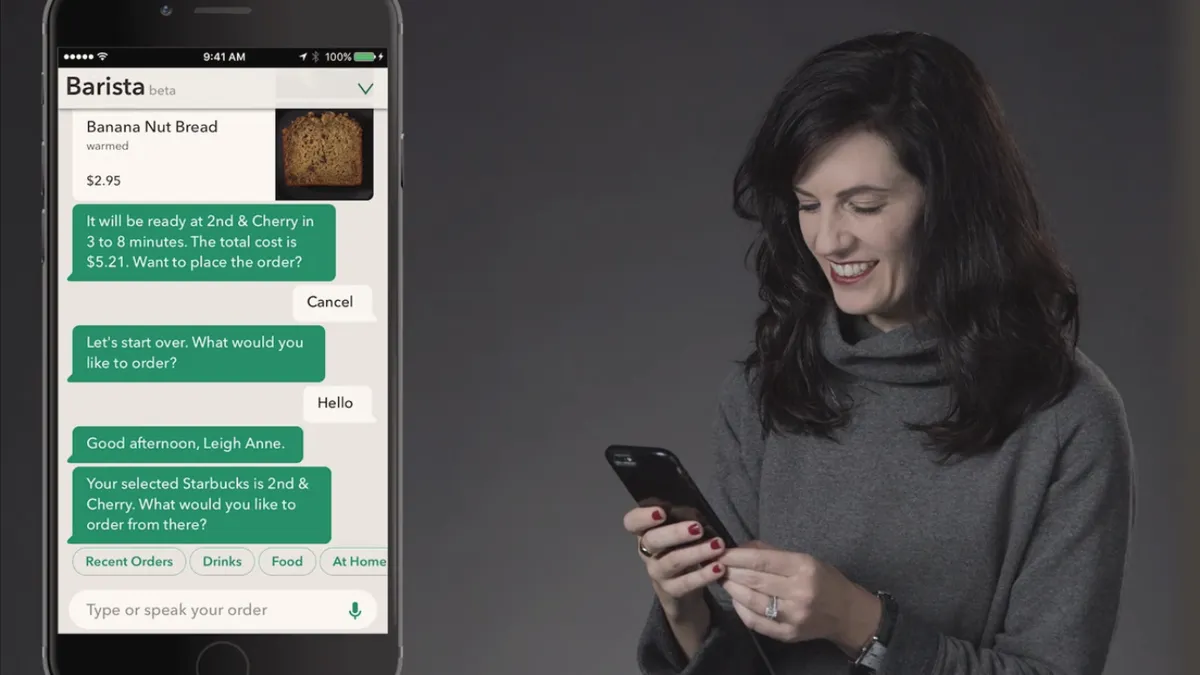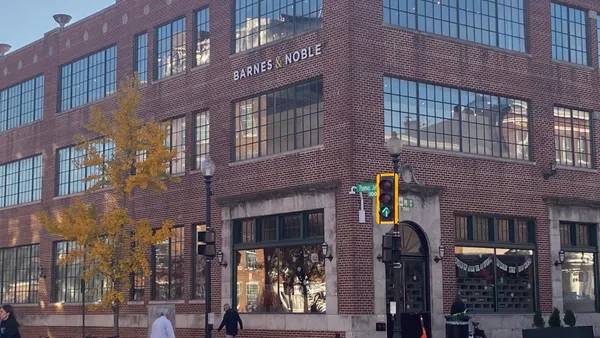Dive Brief:
-
Starbucks is opening its first dedicated Mobile Order & Pay store this week, converting an existing store in its Seattle headquarters building to test new concepts for managing changes in traffic and study the effects the new feature is having on its business.
-
The new store concept arrives after the quick success of the Mobile Order & Pay feature caused foot traffic bottlenecks at the barista stations in some stores. Starbucks responded to those problems by saying it would quickly find a solution.
-
Starbucks' Seattle headquarters includes two stores, one that is open to the public and the other open only to the 5,000-plus employees who work there. The employee-only location is among Starbucks’ top three stores in the country for mobile ordering, according to Fortune.
Dive Insight:
We're interested to see exactly how this will be set up. Can we assume that without a cashier or checkout station that there will be a larger barista station? Could there be room for two baristas? Or will employees who used to be working the register now expedite orders and assist the barista? Or will the spot where the cashiers used to be now be occupied by a stack of Ed Sheeran CDs? So many questions for the Starbucks-obsessed to ponder.
If you are among the Starbucks-obsessed, you probably already have tried Mobile Order & Pay, and have been wondering how the coffee chain would respond to the store congestion problems that had been popping up (while also lighting candles at your Howard Schultz shrine, praying for a solution from the beloved leader who just stepped back from the CEO job at the end of last month).
Interestingly, this test is not necessarily a direct answer to the question of how Starbucks will deal with the congestion. It's arguably more of a speculative exercise in taking the capability to some sort of more advanced level. Will Starbucks start turning more especially busy Mobile Order & Pay locations into dedicated cashier-less locations? That is not so clear, and it's possible Starbucks is still working on some different ideas for how to deal with the congestion issue.
In any case, it's notable that instead of freezing the order-ahead offering in its tracks once trouble cropped up, Starbucks has gone ahead and arguably accelerated its evolution. When the retailer launched this capability it was easy to see a possible future of stores in which the cashier function was eliminated (Starbucks isn't the only one talking about that, as Amazon will tell you), but it's surprising to see the chain already trying it.
Starbucks also is not the only retailer with mobile ordering capability, and if Google's Waze has its way, many other retailers could be in line to roll it out as well. But Starbucks was one of the more aggressive retailers in supporting mobile payments, and it did the same with Mobile Order & Pay, and now it's taking a leadership step — albeit a small, safe one in a company store — with cashier-less checkout. If you want to see how mobile order and payments continue to influence the shape of brick-and-mortar stores to come, Starbucks is probably the retailer to follow from here on out.












